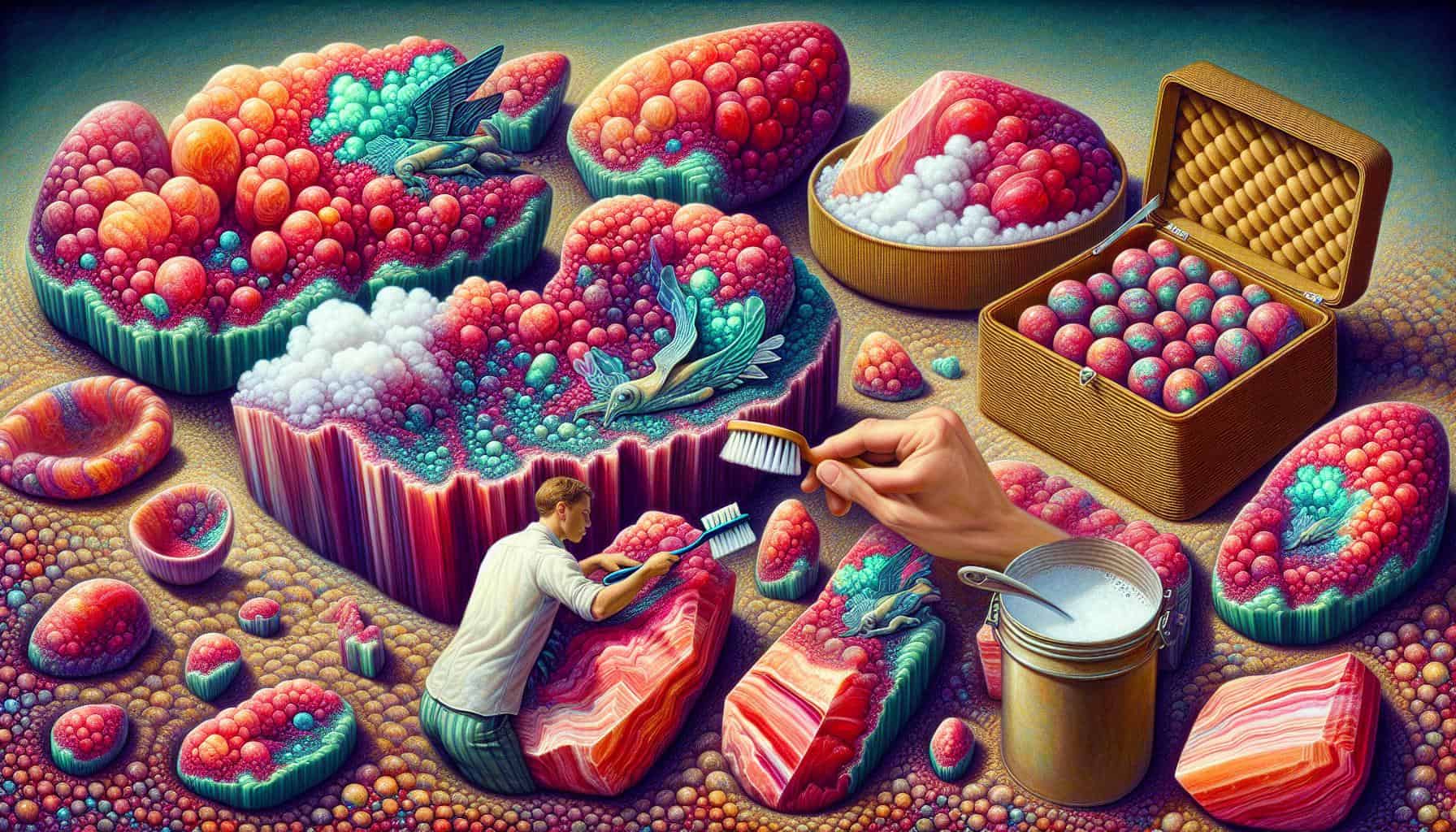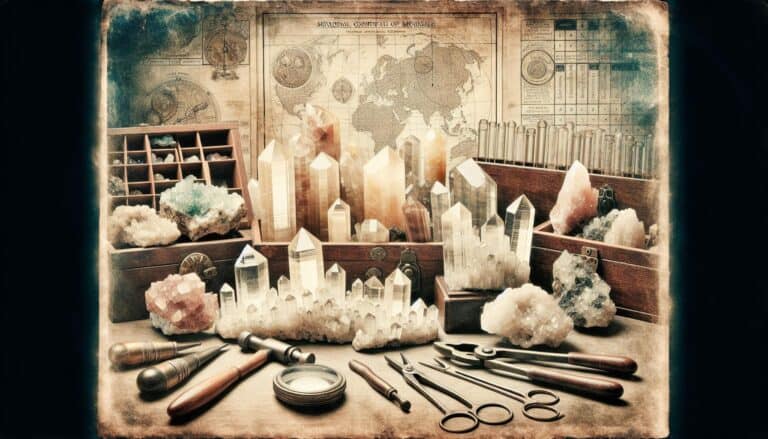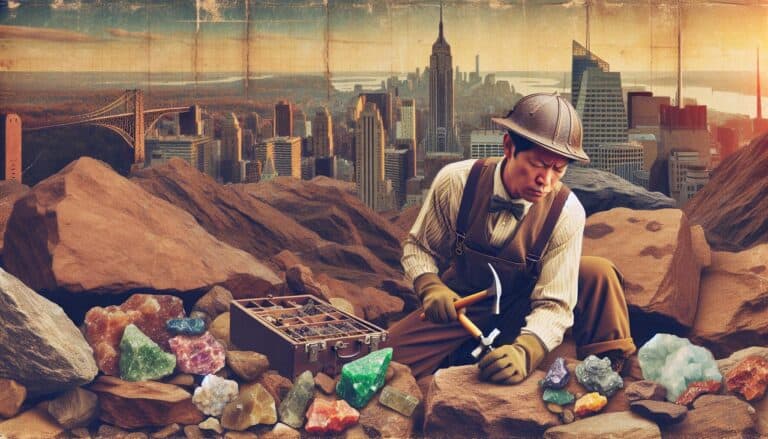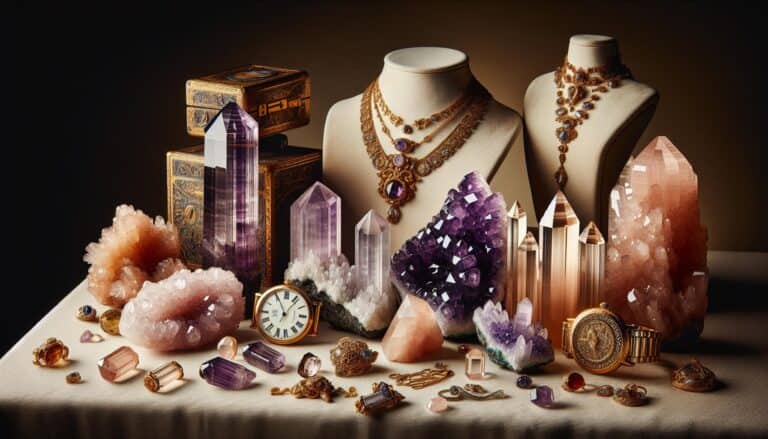Discovering the beauty of rhodochrosite starts with knowing how to spot it.
This striking mineral, with its signature rosy hue, is not just a feast for the eyes but also a collector’s delight. Whether you’re a seasoned gem enthusiast or a curious newbie, identifying rhodochrosite is a skill you’ll want in your arsenal.
You’re about to learn the key characteristics that set rhodochrosite apart from other minerals. From its unique color patterns to its distinct crystal form, we’ll guide you through the simple steps to recognize this gemstone with confidence.
Keep reading to become a rhodochrosite identification pro.
Identifying raw rhodochrosite involves checking for its rosy pink to red color, banded patterns, and pearly luster. It leaves a white streak, isn’t magnetic, and has a Mohs hardness of 3.5 to 4. Double refraction and a refractive index of 1.60 to 1.82 are also key indicators.
How to Identify Rhodochrosite Through Testing
Visual Inspection
Begin by examining the stone’s appearance. You’re looking for a distinctive rosy pink to red hue, which is a hallmark of rhodochrosite. Pay attention to the patterns; rhodochrosite often displays banded patterns in various shades of pink. Also, check for its pearly luster which if present, can be a clear indicator of this sought-after mineral.
The Streak Test
This simple test involves rubbing the mineral against a streak plate, typically made of unglazed porcelain. Rhodochrosite leaves a white streak, regardless of the color of the sample. This test can help differentiate rhodochrosite from minerals with a similar appearance but different streak colors.
Magnet Test
Rhodochrosite is not magnetic, so if your specimen reacts to a magnet, it’s likely not genuine rhodochrosite. This test helps rule out iron-rich look-alikes which can be attracted to magnets.
Hardness Test
With a Mohs hardness of 3.5 to 4, rhodochrosite can be scratched by a copper coin but not by your fingernail. Compare the hardness of your sample to known standards to verify its identity.
Birefringence Test
Under a polariscope, a birefringent mineral like rhodochrosite will exhibit two different colors or shades when rotated. Detecting birefringence helps confirm the mineral’s crystalline structure.
Checking The Diaphaneity
Rhodochrosite can range from transparent to opaque. Hold your sample up to light and determine its light transmission characteristics which can provide a clue about its quality and authenticity.
Single or Double Refraction
By placing a dot underneath the stone and looking through it, observe if the dot remains singular or appears as two. Rhodochrosite, being double refractive, will show two dots, indicative of its crystalline structure.
Refractive Index Test
Professional gemologists can measure the refractive index using a refractometer. Rhodochrosite has a refractive index typically between 1.60 and 1.82.
Finding The Specific Gravity
Rhodochrosite’s specific gravity usually falls between 3.3 to 3.7. Weighing the stone in air and then in water can help determine this property, helping to confirm the stone’s identity.
Identifying Rhodochrosites in the Field
When you’re out collecting specimens, look for the contexts in which rhodochrosite typically forms. It’s often found in hydrothermal veins, associated with metallic ores, and areas that show signs of hydrothermal activity.
Recognizing Potential Rhodochrosite Rocks
In a natural setting, potential rhodochrosite-bearing rocks may appear metamorphic or sedimentary in origin. Look for pink streaks and a glossy surface which can indicate the presence of rhodochrosite.
Physical Characteristics of Rhodochrosite

Rhodochrosite’s unmistakable aesthetic is one of its hallmark features. You’ll typically find this mineral in shades of pink or red, although the color can also range from a soft rose to a vibrant raspberry. These colors are due to the presence of manganese in its composition. Variations in hue are common and can be attributed to differing levels of manganese and other trace elements.
Beyond its striking color, rhodochrosite boasts a signature pearl-like luster. When you’re examining a potential piece, look for its distinctive pearly to vitreous sheen. A rougher, duller luster may point to an imitation or a different mineral altogether.
The crystal system of rhodochrosite is also a solid clue to its identity. Belonging to the hexagonal system, its crystals are commonly rhombohedral, and less frequently, can be scalenohedral or prismatic. For those of you exploring field sites or sifting through mineral collections, keep an eye out for these geometric patterns.
Here are some additional noteworthy properties:
- Cleavage: Perfect rhombohedral
- Fracture: Uneven to conchoidal
- Mohs Hardness: 3.5 to 4.5
When assessing rhodochrosite, don’t forget that it typically has a transparent to translucent diaphaneity. This means light can pass through it, either fully or partially respectively, adding to its allure and further confirming its identity. Armed with this knowledge on physical characteristics, you’ll be well-equipped to discern authentic rhodochrosite specimens from look-alikes.
How Are Rhodochrosite Formed?
Understanding how rhodochrosite is formed can give you deeper insights into its unique characteristics and help you identify authentic pieces. Rhodochrosite is primarily formed through hydrothermal processes within the Earth. These processes involve mineral-rich hot water flowing through fractures and cavities in sedimentary rocks. Over time, as the water cools, rhodochrosite and other minerals crystallize and fill these spaces.
Sedimentation also plays a vital role in rhodochrosite formation. The mineral can develop in sedimentary deposits where manganese-rich solutions from hydrothermal vents precipitate to form nodules. These conditions are typical in the seabed, where the slow accumulation of layers results in the creation of manganese ore deposits, with rhodochrosite being one of the components.
The manganese content is key to rhodochrosite’s distinct color, and the conditions under which the mineral forms greatly influence its appearance. Rhodochrosite’s formation process can occur in various locations around the world, but some of the most significant deposits are found in Argentina, South Africa, and the United States.
Knowing the origin and formation process of rhodochrosite prepares you to better understand the environmental and geological conditions that influence its properties. When you’re examining a specimen, these details can guide you in recognizing markers of authenticity, such as formation patterns and associated mineral inclusions.
Preparation for Rhodochrosite Hunting
Preparation for Rhodochrosite Hunting
Before setting out on your rhodochrosite hunting adventure, make sure you’re thoroughly prepared. Adequate preparation includes gathering the necessary tools and understanding safety considerations. With the right essentials in hand, you’ll heighten your chances of discovering this beautiful gemstone.
Gathering the Right Tools
To embark on your rhodochrosite hunting trip, you’ll need an array of specialized tools. Since rhodochrosite is primarily hunted within sedimentary rocks, your toolkit should cater to this environment.
- Rock Hammer: An indispensable tool for any gemstone hunter, a rock hammer will help you chip away sediment and extract rhodochrosite samples.
- Chisels: Coupled with your rock hammer, chisels will allow you to precisely break rock without damaging the crystals.
- Safety Goggles: Protect your eyes from flying debris with a sturdy pair of goggles.
- Gloves: Durable gloves will safeguard your hands during digging and handling sharp rocks.
- Field Guide: Equip yourself with a field guide to help in identifying rhodochrosite amidst other minerals.
Don’t forget a backpack to carry your tools and water to stay hydrated. A good quality backpack will ensure your equipment is secure and easily accessible.
Safety Considerations
Your safety should always come first. When hunting for rhodochrosite, you’re likely to be in remote, rugged areas where terrain can be unpredictable. Pay close attention to these guidelines to avoid potential hazards:
- Wear Protective Gear: Always suit up in your safety goggles and gloves. Consider a hard hat if you’re in an area with a risk of falling rocks.
- Be Mindful of the Terrain: Watch your step to avoid slips and falls, especially when carrying tools.
- Watch the Weather: Get up-to-date weather reports before heading out. Bad weather can turn an outing dangerous very quickly.
- Stay in Groups: It’s safer to hunt with companions who can help in case of an emergency.
- Inform Others of Your Plans: Let someone know where you’re going and when you expect to return.
By following these tips and adhering to safety measures, you’ll make the most out of your rhodochrosite hunting journey. Carry a first-aid kit and a charged cell phone, and you’ll be all set to explore with confidence.
Handling and Care of Found rhodochrosites
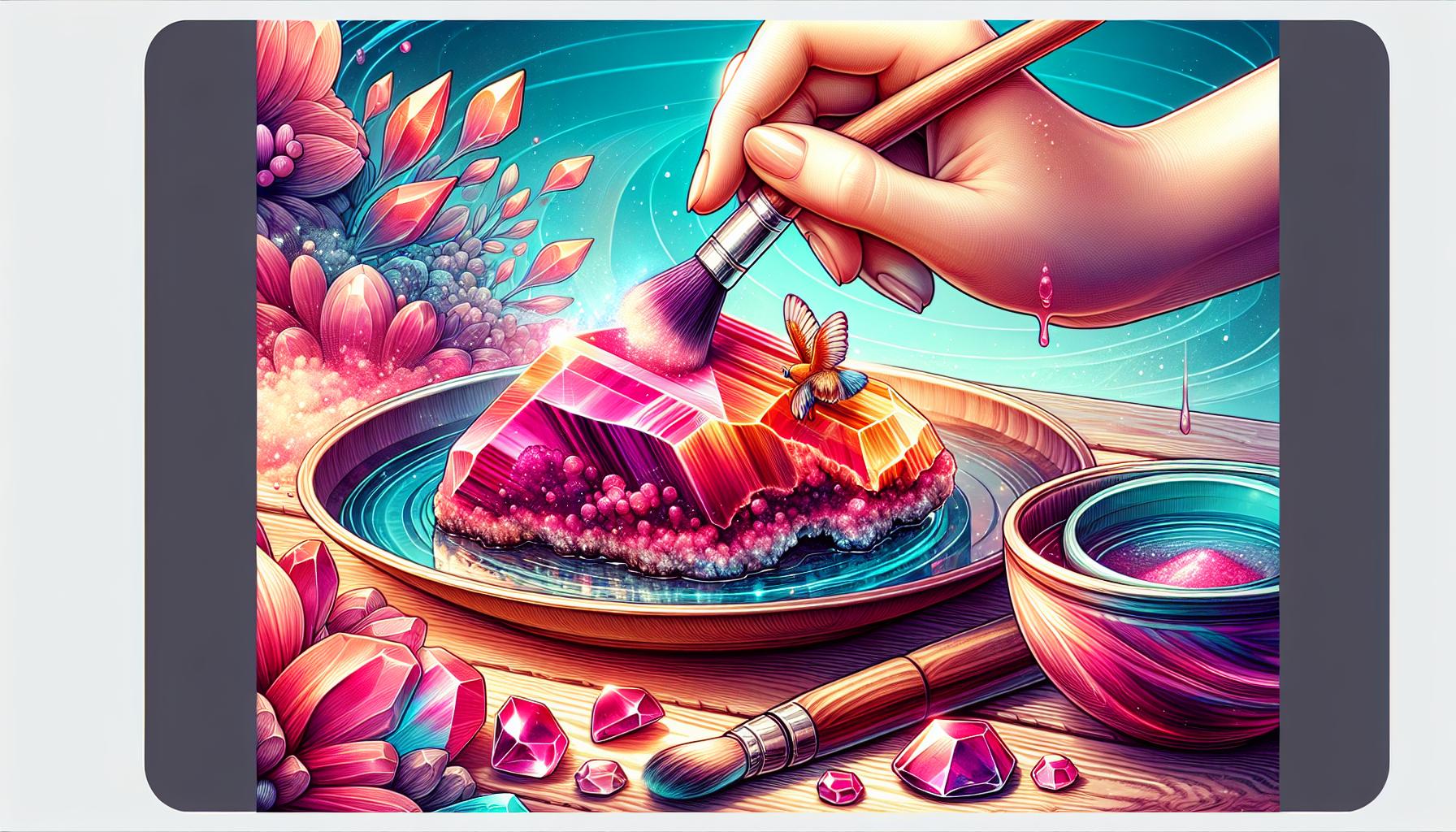
Once you’ve located and extracted rhodochrosite specimens, proper handling and care are crucial to maintain their condition. These minerals are not only beautiful but also fragile, and they command attention to detail to preserve their natural luster and color.
Cleaning Rhodochrosites
After a successful day of rhodochrosite hunting, you’ll want to clean your finds to reveal their true beauty. Start by gently removing any loose dirt with a soft brush. If your specimens are caked with mud or clay, immerse them in water for a few hours to soften the stubborn dirt. Avoid using harsh chemicals or abrasive materials that can scratch or damage the stone.
Here’s a simple step-by-step guide for cleaning:
- Rinse each piece under lukewarm water to wash away any remaining dirt.
- Use a mild detergent and a soft toothbrush to gently scrub the surfaces.
- Rinse again to remove any soap residue.
- Pat dry with a soft cloth or let air dry on a towel.
Storing Rhodochrosites
Storing your rhodochrosite specimens correctly is as important as cleaning them. To prevent scratches or chips, wrap each piece separately in a soft cloth or place it inside a padded box. If you’re displaying your rhodochrosite, avoid direct sunlight and high temperatures, as prolonged exposure to intense light and heat may cause fading.
For optimal preservation, consider the following storage tips:
- Keep rhodochrosites in a cool, stable environment.
- Do not stack heavy objects on top of the specimens.
- Ensure the storage area is dry to prevent mineral degradation.
- Label each specimen with information such as the date and location of finding.
- Maintain an inventory to keep track of your collection.
By treating your rhodochrosites with care, you preserve their splendor for years to come. Each piece of rhodochrosite tells a story, so take the time to protect these narratives etched in stone.
Conclusion: Confirming Real Rhodochrosite
You’ve now got the know-how to identify rhodochrosite and ensure your specimens stay in prime condition.
Remember, the beauty of these minerals is matched by their fragility, so handle them with the care they deserve. Keep them clean, store them safely, and your rhodochrosite collection will continue to captivate and amaze. Whether you’re a seasoned collector or a curious newcomer, your journey into the world of rhodochrosite is sure to be as rewarding as it is colorful.
Embrace the process and watch your collection grow and flourish.

